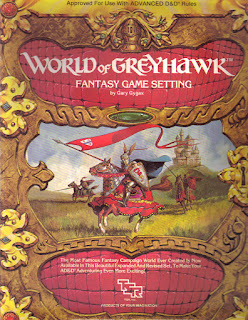System and Setting (+thoughts on ASSH)

I received +Jeff Talanian 's Magnum Opus in the mail last week - The 2nd edition of ASTONISHING SWORDSMEN & SORCERERS OF HYPERBOREA (Jeff was a real gentleman and let me get in on the kickstarter run even though I missed the deadline). It's kinda the opposite of what I am trying to do with Into the Unknown . It's built on the chassis of Advanced D&D 1e, while I am trying to build a modular 'un-advanced' edition of 5e. I am going for as lean as at all possible, with six booklets optimised for table play and 200 pages of gaming material being my top limit. ASSH is a massive 608-page hardbound single volume. I am quite in awe of what Jeff has made though. The feel of the book alone, heavy from quality paper and binding, gives it potential to become one of those treasured tomes on many a gamer shelf. And the content is dead-on. I'd like to 'un-advance' a few bits here and there. But the classes, setting, monsters and spells are just dripping w










